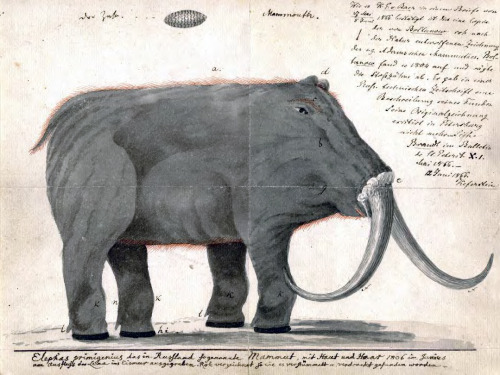Rediscovery Of The Woolly MammothThe woolly mammoth is a species of mammoth that unfortunately went
Rediscovery Of The Woolly MammothThe woolly mammoth is a species of mammoth that unfortunately went extinct around 10,000 years ago, this animal is also seen as the symbol of ancient European ice ages. Small populations of woolly mammoths continued to survive on the Wrangel Island in Russia until as recent as 4,000 years ago. There were still some mammoths left when the great pyramids in Egypt were being built. Even though all mammoth species are now extinct, their legacy continues to live on in the minds of modern humans. Their bones and tusks are still being used until this very day. The indigenous cultures of Siberia and North America still contain myths explaining the presence of mammoths and other extinct megafauna. Whether these myths are based on ancient memories of ancestors who have witnessed these animals or based on found remains throughout the centuries is not fully known.Indigenous Siberian people believe that the remains of woolly mammoths were once part of an animal able to crawl underground, also an explanation why earthquakes happen. If a mammoth was unfortunate enough to crawl upwards and reach the surface, it would die. This is one of the legends surrounding the woolly mammoth that has survived until this day. Indigenous north American people had similar stories of mammoths living underground. Another native-American legend, of the Inupiat people, suggests that mammoths were primordial giants. Long before the western world started to seriously study ancient extinct species, parts of mammoth remains, such as their tusks, were imported into Europe. This precious ivory is still worth an incredible amount of money but back in the medieval ages, no one thought this ivory came from an extinct species. Europeans had several explanations for woolly mammoth remains: they probably belonged to an escaped herd of elephants during the Roman republic, they were the actual war elephants of Hannibal, they are simply just elephants who wandered a bit too far north or they are the victims of the great flood described in the biblical book genesis. The first person who recognized that these remains were actually part of an extinct species of elephant was Hans Sloane back in 1728. Sloane published a paper in that year what can now be considered as the first scientific research on the woolly mammoth. 10 years later another researcher, Johann Philipp Breyne, also researched mammoth fossils and came to the conclusion that they are a species of elephant. Both men were however clueless on how these ‘elephants’ got in Siberia and proposed the theory that they were victims of Noah’s flood. It took until 1796 when these mysterious 'elephant’ remains from Siberia were finally identified as a completely different species, not modern elephants as thought before but an entirely new species. French anatomist Georges Cuvier was the first to identify the woolly mammoth as a mammoth species and the German naturalist Johann Friedrich Blumenbach gave the species its official scientific name 'Mammuthus Primigenius’. In 1806, a Russian botanist Mikhail Adams journeyed towards northeastern Siberia to witness the most complete woolly mammoth skeleton found back in 1799. (the most complete of that time period, more complete and intact mammoth remains have been found since 1799) It was the first time that the entire skeleton, without the tusks, was found. The remains were brought back to St Petersburg and an attempt was made to reassemble the skeleton. There was however one problem, no one knew how the tusks would have looked like so the tusks were mounted on the wrong sides so that the curves went outwards instead of inwards. This mistake wasn’t corrected until 1899 and is still visible in the famous sketch of Adams mammoth. Nowadays multiple subspecies of mammoth have been discovered, the woolly mammoth is just one of the mammoth species that once roamed the earth. It took until 2005 before researchers were finally able to complete a full mitochondrial genome profile of the woolly mammoth. 10 years later in 2015 it was confirmed that the closest living relative of the woolly mammoth is the asian elephant. If an attempt is ever made to bring back the woolly mammoth, our modern asian elephants can help us out. But the subject of bringing the woolly mammoth back to life again is a topic for another post. Here are images of:Woolly mammoth by Mihin89,The Adams mammoth right now, with the tusks in the correct position,Sketch of Adams mammoth with the tusks on the wrong side, -- source link
#prehistoric#paleolithic#megafauna#animal#mammoth#woolly mammoth#history


